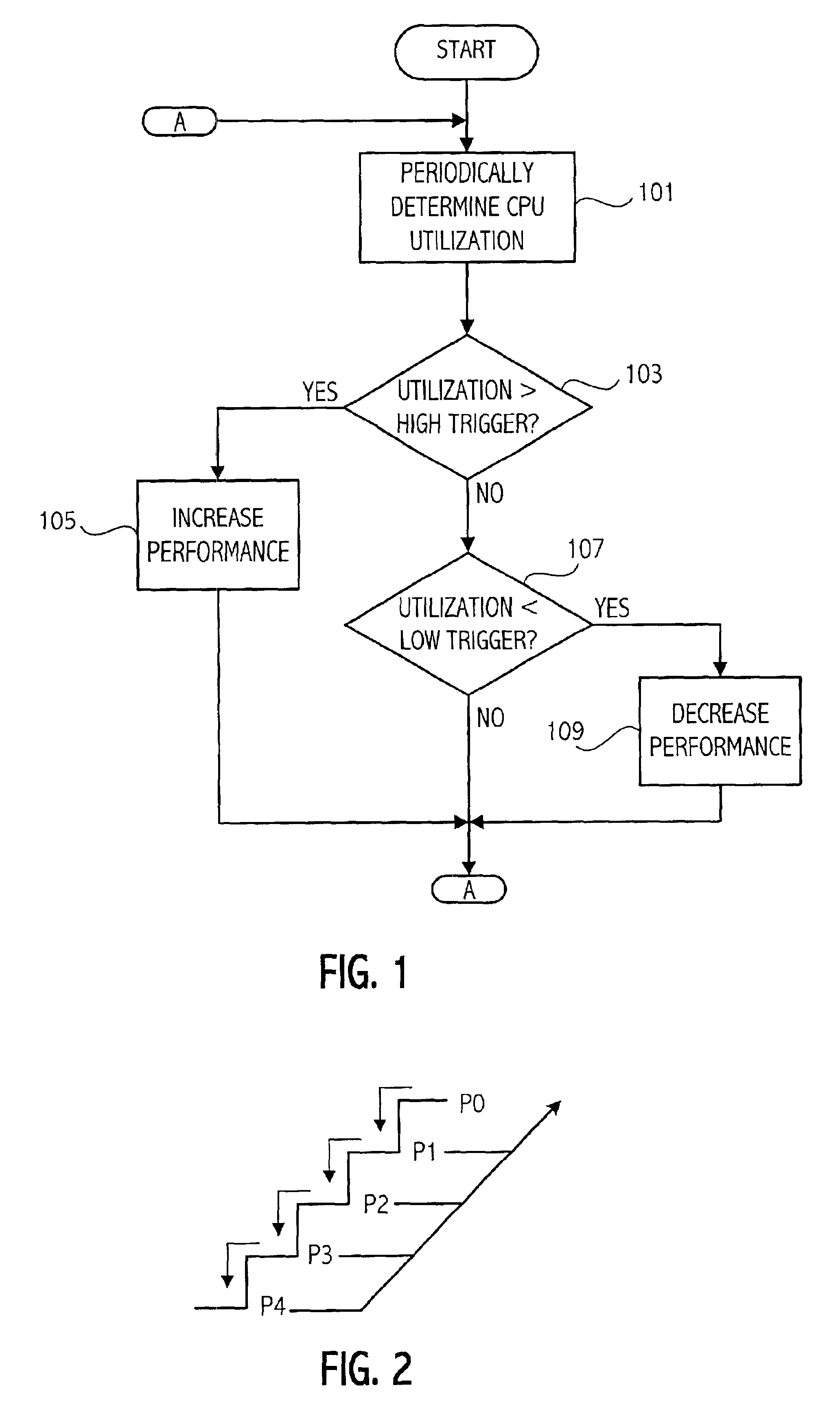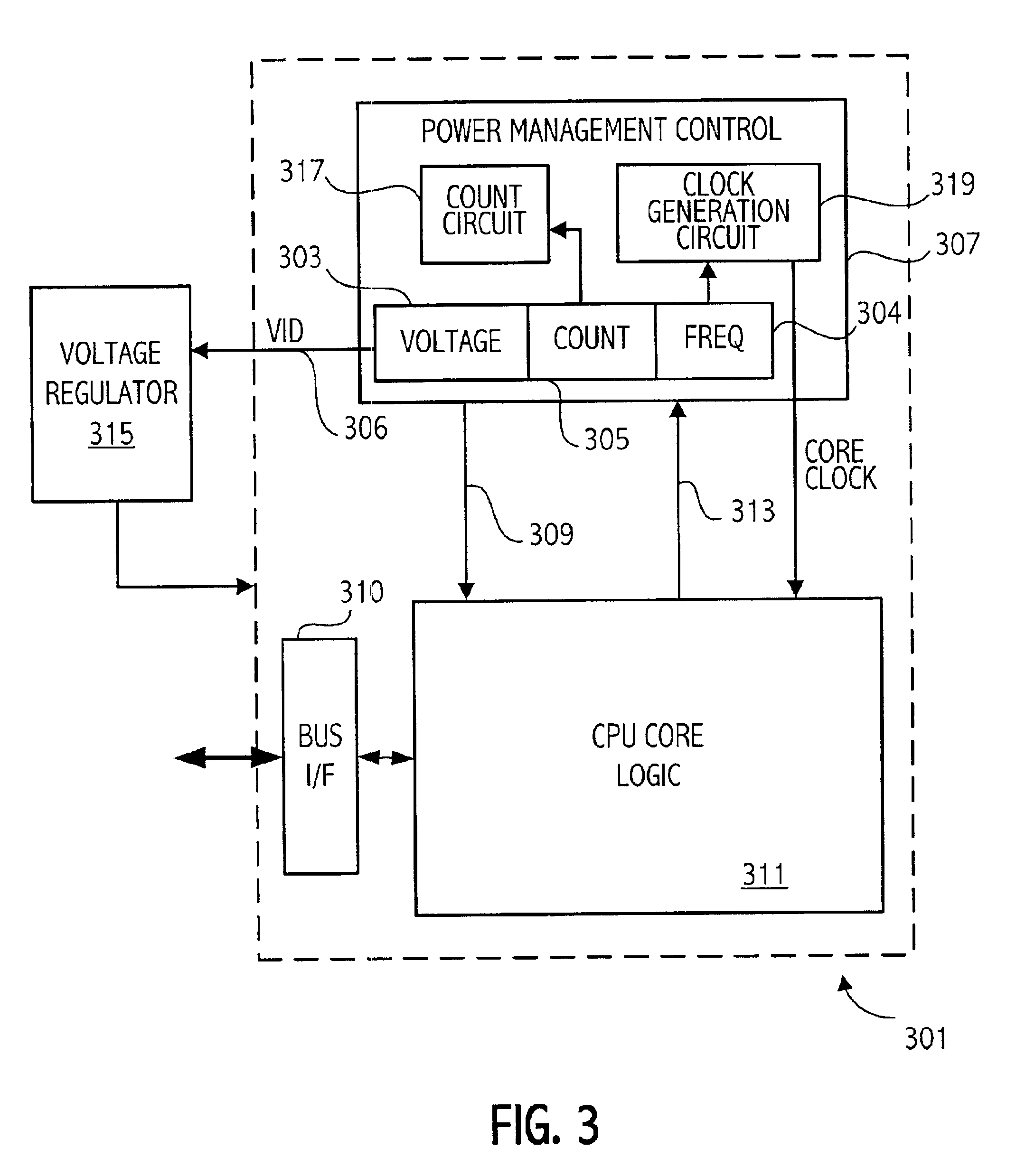Variable maximum die temperature based on performance state
a technology of performance state and maximum die temperature, applied in the field of computer system power management, can solve the problems of limiting the frequency of a processor, limiting the speed of a processor in certain environments, and limiting the power and thermal consideration of a processor, so as to reduce the maximum allowable performance state
- Summary
- Abstract
- Description
- Claims
- Application Information
AI Technical Summary
Benefits of technology
Problems solved by technology
Method used
Image
Examples
Embodiment Construction
[0018]A computer system according to one embodiment of the invention has a plurality of processor performance states, the processor performance states being generally determined by unique voltage / frequency combinations. The computing system provides lower maximum performance states as the detected temperature of, e.g. the processor die, increases. In addition to having a different maximum performance state associated with particular temperature ranges, the computer system may change to a different performance states based on such factors as processor utilization as explained more fully herein. The detected temperatures may be related directly to the processor by measuring the die temperature directly using a sensor on the die or may measure the die temperature indirectly using a sensor that is off-die. In addition, other indirect measurements may be taken such as ambient temperatures or measurements of the temperature of other computer system components to determine the appropriate ...
PUM
 Login to View More
Login to View More Abstract
Description
Claims
Application Information
 Login to View More
Login to View More - R&D
- Intellectual Property
- Life Sciences
- Materials
- Tech Scout
- Unparalleled Data Quality
- Higher Quality Content
- 60% Fewer Hallucinations
Browse by: Latest US Patents, China's latest patents, Technical Efficacy Thesaurus, Application Domain, Technology Topic, Popular Technical Reports.
© 2025 PatSnap. All rights reserved.Legal|Privacy policy|Modern Slavery Act Transparency Statement|Sitemap|About US| Contact US: help@patsnap.com



